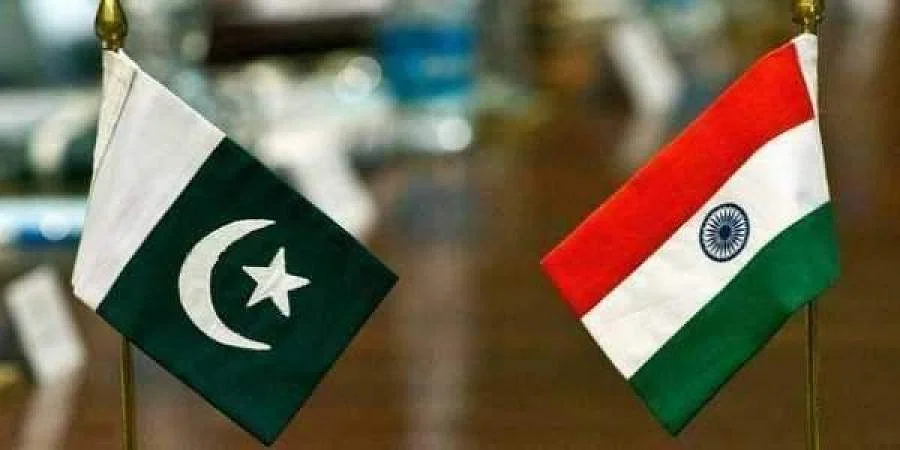
India and Pakistan during the partition of India in 1947, the geographical boundaries were determined by drawing lines on the map, which was done by Lord Radcliffe. Yet another important task remained. That is, wealth sharing. It was more difficult to decide who would go to what in the two new countries.
According to the Economic Times report, this resource sharing has been done differently in each case. A coin is tossed to determine who will have the viceroy’s buggy (a light horse-drawn carriage carrying one or two passengers), with India inheriting the buggy. It is housed in the Rashtrapati Bhavan of India. The intention is that the President of India will use it.
But finally, in 1984, the use of that buggy was stopped due to safety reasons. However, in 2014, then-President Pranab Mukherjee used it in an event. However, some other resources including human resources are shared between the two countries with considerable importance.
The Partition Committee was formed in 1947 under the leadership of Lord Mountbatten to share the wealth. Congress was represented on the committee by Sardar Vallabhbhai Patel and Rajendra Prasad;
Later Abdur Rab Nisar was replaced by Muhammad Ali Jinnah himself; The committee was renamed the Partition Council, under which 10 expert commissions supervised the partition.
Partition was not done in a friendly atmosphere.
India and Pakistan Money sharing
As part of the partition agreement, 17.5 percent of British India’s assets and liabilities fell to Pakistan. But that was not the end, the newly formed Central Bank of Pakistan and the Reserve Bank of India had another decision to make, that is to settle the issue of cash position.
At that time India had 400 crore rupees.
A year after independence, the economies of India and Pakistan have been managed by one and the same central bank. This arrangement was in place till September 1948. However, according to initial plans, the two countries were to be governed by one central bank until October 1948.
At that time India and Pakistan used to have the same currency. The decision of the expert committee was that the two countries will have the same currency till March 31, 1948.
In August 1947, Pakistan was given 20 crore rupees, but immediately after the partition of India, when Pakistan occupied a part of Kashmir with mercenary fighters, there was a problem with the payment of the remaining 55 crore rupees. India stopped releasing that money. The then Home Minister of India, Sardar Vallabhbhai Patel, made it clear that this money will not be released if there is no decision on Kashmir. Pakistan did not object to it then.
Gandhi’s intervention
But during the final negotiations on Kashmir on 22 December 1947, Pakistan objected to the merger of the two issues and demanded an immediate concession of Rs 55. However, Mahatma Gandhi did not see this position of India well, and as usual, he went on a hunger strike to resolve the problem. Later the Government of India took the initiative to resolve the problem by showing respect for his position.
76 years have passed since 1947. Both countries still claim that they receive money from each other. Every year the Indian government regularly states in its Economic Survey that India will receive money from Pakistan as part of its pre-partition debt; In so many days the interest has actually increased to Rs.300 crores.
Pakistan said in 2014 that the RBI had not given Pakistan much of its due during partition, with interest so far amounting to Rs 560 crore. Dues are inflated by inflation and exchange rates.
Resources like money are also shared between the two countries. Needless to say, the process was not pleasant. Even the police chiefs clashed over the sharing of resources. The hostility between the two countries has not yet ended.
Distribution of manpower
Another point of division between the two countries was government manpower. This manpower was scattered all over India. After much thought and discussion, the Partition Council decided that the state employees would be given the opportunity to choose the country. They will decide for themselves whether they will work as employees of the Government of India or for the Government of Pakistan. It was decided to provide this facility at both the central and provincial levels.
But the real problem arises after that. West Bengal and East Pakistan have the most problems in this regard.
In the case of West Bengal, a large number of people working as government employees in the then-undivided Bengal decided to migrate to India. As a result, the West Bengal government faced the problem of excess manpower. On the other hand, East Pakistan is facing the problem of manpower shortage. Because many employees who worked at various levels in the new country migrated to India.